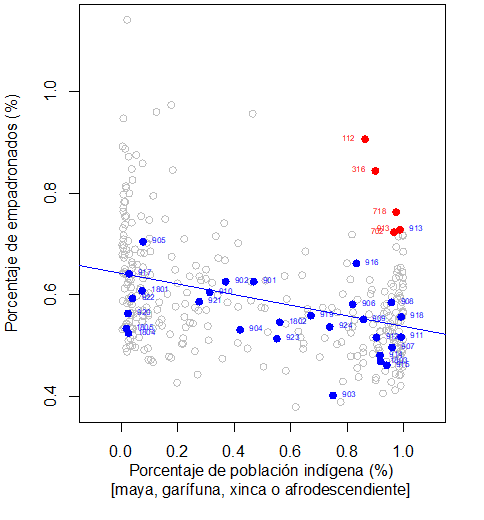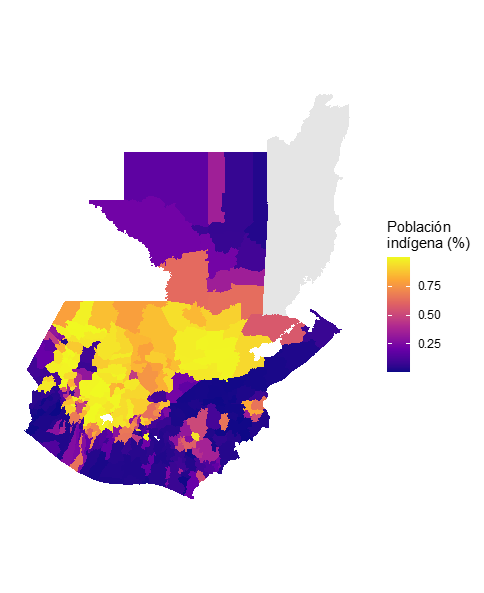Disclaimer:
Please be aware that the content herein has not been peer reviewed. It consists of personal reflections, insights, and learnings of the contributor(s). It may not be exhaustive, nor does it aim to be authoritative knowledge.
Overview
Prepared by (Name of the experimenter)
Javier Brolo and Juan Pablo Rustrián
On date (Day/Month/Year)
August 31th, 2022
Current status of experimental activity
Completed
What portfolio does this activity correspond to? If any
Knoweledge management
What is the frontier challenge does this activity responds to?
How to base decisions and behaviors on existing knowledge
What is the learning question(from your action learning plan) is this activity related to?
What makes it easier for decisions and behaviors to be informed by existing knowledge rather than starting from scratch?
Please categorize the type that best identifies this experimental activity:
Pre Experimental (trial and error, prototype, a/b testing), Quasi Experimental (Analytical, observations, etc)
Which sector are you partnering with for this activity? Please select all that apply
United Nations agency, Public Sector
Please list the names of partners mentioned in the previous question:
Tribunal Supremo Electoral de Guatemala; Governance programmatic area at UNDP office
Design
What is the specific learning intent of the activity?
We wanted to test whether positive deviance was a viable method to be used with available data and to identify the municipalities with the largest indigenous population that have the lowest percentage of political participation. Also identify positive deviations as the municipalities with a high percentage of indigenous population and a percentage of registration considerably higher than expected. Also, we wanted to learn if this method could be considered for fieldwork to understand the reasons for the greater political participation of indigenous populations, and thus inform actions in other territories (municipalities).
What is your hypothesis? IF... THEN....
If we use DPPD then we'll identify cases where barriers to indigenous participation are overcome.
Does the activity use a control group for comparison?
Yes, a different group entirely
How is the intervention assigned to different groups in your experiment?
Non-random assignment
Describe which actions will you take to test your hypothesis:
Data Powered Positive Deviance (DPPD) is a technique which assumes that in every community there are individuals or groups who develop unconventional practices that help them deal better with challenges than their peers and consists of five stages. For this experiment, we focused only in the first two stages (Assess problem-method fit and determine positive deviants). During the first stage we defined the problem and the scope of the intervention. Checked if DPPD is a suitable and feasible method by assessing required data and capabilities to ensure that potential outcomes are desirable for the target group. Then, for the second stage, an analysis was made to determine which municipalities have the largest indigenous population with the lowest percentage of political participation and identify which municipalities were positive deviations. To do so, a linear regression model was made, based on the XII National Population Census and VII of Household data from the 2018, to compare the observed results with the estimated results.
What is the unit of analysis of this experimental activity?
Municipalities
Results
Was the original hypothesis (If.. then) proven or disproven?
Proven. Using DPPD allowed us to identify municipalities with higher percentage of indigenous population with a percentage of registration for political participation considerably higher than expected.
Do you have observations about the methodology chosen for the experiment? What would you change?
Our model for estimating expected registration for political participation should be reviewed based on existing literature to select the relevant variables. Using secondary data possess challenges on the validity of the interpretations. Implementing this exercise required a considerable amount of knowledge on how to analyze different types of data.
From design to results, how long did this activity take? (Time in months)
Less than one month.
What were the actual monetary resources invested in this activity? (Amount in USD)
US$0.00
Does this activity have a follow up or a next stage? Please explain
Yes. The DPPP method has 3 more stages: (3) Discover factors underlying outperformance (4) Design and implement interventions (5) Monitor and evaluate. These stages along with the positive deviants might be relevant for the Supreme Electoral Court (TSE for its acronym in Spanish) to do fieldwork and understand the reasons for the greater political participation of indigenous populations, and thus inform actions in other territories (municipalities) to increase political participation.
Is this experiment planned to scale? How? With whom?
No.
Please include any supporting images that could be used to showcase this activity
Considering the outcomes of this experimental activity, which of the following best describe what happened after? (Please select all that apply)
This experiment led to partnerships
Learning
[Empty]
What do you know now about the action plan learning question that you did not know before? What were your main learnings during this experiment?
We know that DPPD is a viable methodology using available and open access data. We also know which municipalities have the largest positive difference between expected and observed registration for political participation.
What were the main obstacles and challenges you encountered during this activity?
The main obstacles were the skills needed to process and integrate the data from our sources. Also, it's not clear if our model for estimating expected registration for political participation is sound. Yet, the most difficult part is creating interest in the results and using them to scale in other territories.
Who at UNDP might benefit from the results of this experimental activity? Why?
The governance pragmatic unit might find it relevant to understand which municipalities have a higher registration level despite being an indigenous population and what's working to hace higher level of political participation. All UNDP projects could benefit from incorporating DPPD in their repertoire of methods to determine the locations to work.
Who outside UNDP might benefit from the results of this experiment? and why?
The Supreme Electoral Tribunal (TSE) and policy-research organizations that need additional ways to generate knowledge from existing data and reach a higher political participation.
Did this experiment require iterations? If so, how many and what did you change/adjust along the way? and why?
It required a bit of iterations in the data processing and analysis techniques. However, it was a single question and result.
What advice would you give someone wanting to replicate this experimental activity?
Look at documentation on DPPD, identify people with data processing and analysis skills. Be ready to use messy data. Understand the technical limitations of the audiences to understand the process. DPPD is a very counterintuitive idea to traditional projects. Traditional projects seem to operate under a "hero" mentality, believing they have the answer on how to rescue people in most need. It is difficult to sell the idea that projects could be facilitators of peer-to-peer learning at the local level, where some local solutions exist that work in the context where needs emerge but aren't being used by everyone yet.


 10Reduced innequalities
10Reduced innequalities


 17Partnerships for the goals
17Partnerships for the goals
Comments
Log in to add a comment or reply.
Javier Antonio Brolo
February 27, 2023
Testing comments